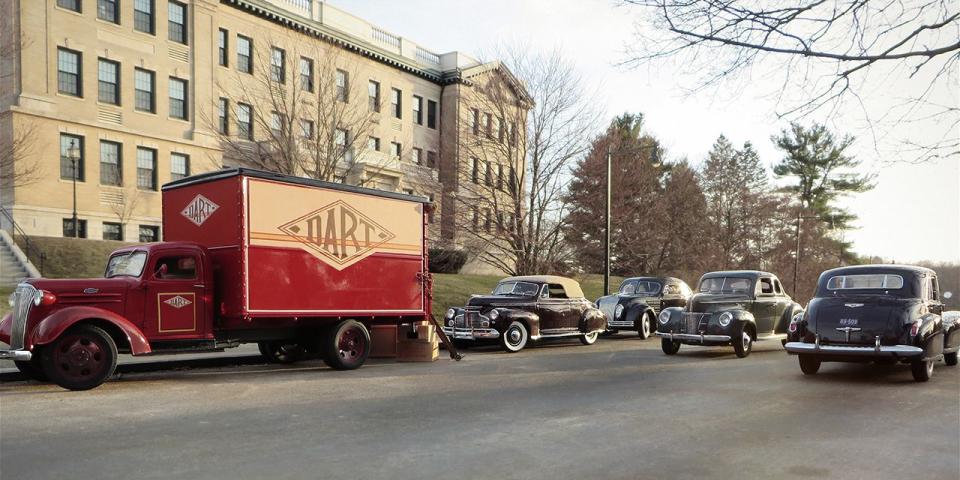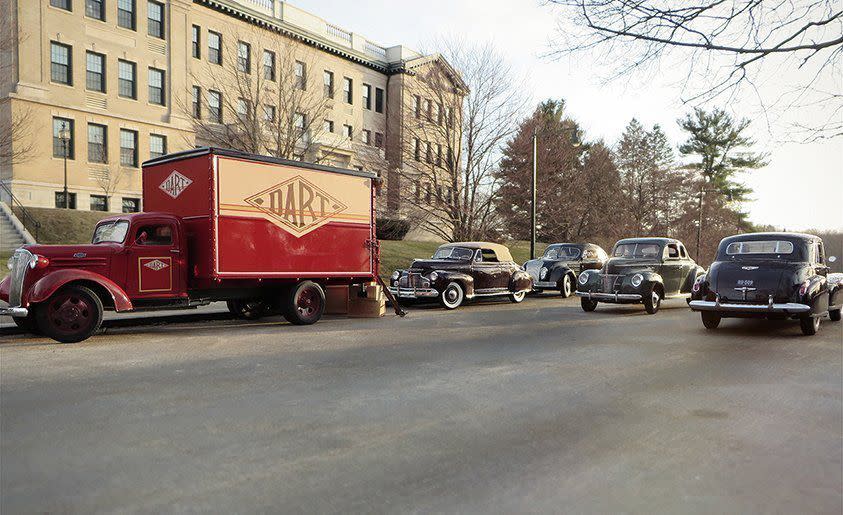Theater of the Mind: Perception Often Happily Trumps Reality


From the February 2016 issue
When I was in high school, each zit-bedazzled student underwent a mandatory one-on-one with the guidance counselor, who was bald and terrifying in the way Nikita Khrushchev was bald and terrifying. The counselor asked if I had pondered a career. “Race-car mechanic or drummer for Herb Alpert & the Tijuana Brass,” I responded, which caused him to rap his pencil on the desk, as if trying to break both. “Guess I’ll be calling your parents,” he replied. But when he reached my mother, she belted out a shopping list of reasons why guidance counselors should hang themselves from lampposts. The matter of my career arose never again.
So I smiled to learn that Michael Paul Smith’s high-school guidance counselor was little better, telling him he had “no apparent creative talent that could be used for employment. Go work in the steel mills.”
Smith, now 65, declined. Instead, he designed displays for the Smithsonian, became an architectural model maker, a textbook illustrator, and the art director for an ad agency. The agency’s crushing deadlines induced a heart attack, so, for the last 17 years, Mr. Smith has been working in his kitchen.

X-Acto blade in hand, he’s been assembling 1/24th-scale dioramas —’50s and ’60s houses, garages, warehouses, lawn furniture, and billboards. Into those scenes he inserts any of 300 die-cast automobile models he owns, most from the Franklin and Danbury mints. He positions his detailed miniatures on a flat foam-core base—painted to look like asphalt, oil stains and all—then schleps the scene around his Boston environs until he finds a complementary real-life background. Wielding a point-and-shoot Canon PowerShot SX280 whose varied functions reliably confuse him, he then photographs the two scenes—fake foreground, real background—until he obtains a single image so persuasively conjoined as to cause first-time viewers to remark, “That’s impossible.” A willing suspension of disbelief is not required. The trickery lurks in the illusory residue of forced perspective, via Smith’s extraterrestrial ability to correlate conflicting depths of field. “My two big rules are to keep everything in scale,” he says, “from the thickness of the shingles to the doorknobs. And to shoot at what would be eye level for a person walking through the scene.” A person four inches tall.
Smith’s images have just been published in a coffee-table book, Elgin Park: Visual Memories of Midcentury America at 1/24th Scale (Animal Media Group, $75). It’s a car enthusiast’s time machine, especially for baby boomers. Smith’s devotion to period-correct details may border on the religious. Take, for example, his hand-built bungalow house, with a ’41 Chevrolet parked alongside. It took four months to distill that diorama into a single persuasive image. “If I included my labor at $15 an hour,” he says, “it probably represents $35,000 to $40,000.” He often paints his cars’ whitewalls black “because whitewalls, back in the day, cost $5 extra, so you didn’t see that many.”

Creating the image that Smith sees in his brain may require 100 photos taken over three days, during which he must fret about windstorms that occasionally dash the whole diorama. “It sure has ruined a few cars, and they don’t bend realistically,” he laments. He works in silence—no radio, and no TV because he doesn’t own a TV. He’s been followed by police helicopters monitoring his admittedly odd movements. Even though he received permission from a local homeowner whose residence he wanted to meld with a 1936 Packard V-12 Phaeton, the owner became unhinged just as Smith began photographing. That time, he managed only three photos before Five-O rolled up. Yet the finished product is among the most compelling in the book.
“Other than talking to policemen, I’ve become something of a recluse,” he told me. “I spend my waking hours in my third-floor apartment’s kitchen. I was the nerd in high school. I’m still that guy. My early models were all flawed, so I ran over them with a lawn mower. The rest I set on fire with modeling glue.”
Although Smith once owned a ’51 Studebaker Champion sedan, he now possesses no real-life car. His enthusiasm is confined to automotive styling, which explains his favorite models: “A ’63 Corvette that’s actually made from fiberglass,” he beams, “and a ’57 Mercury Turnpike Cruiser that makes me smile every time I see it.”
He places no 1/24th-scale people in his dioramas, although you won’t notice until it’s pointed out. “One of my neuroses is that a person in a photo distracts me because I want to know his story,” he explains. Film companies and ad agencies for luxury cars have come calling, but Smith has so far said no. “It would take months to do what they’re asking. I told them, ‘It’s only me at my kitchen table, and assembling just one building takes forever.’ They wanted 150 buildings.”
America probably doesn’t need more proof that perception often happily trumps reality. But here it is, artfully rendered. Our presidential candidates should take note.
You Might Also Like

 Yahoo Autos
Yahoo Autos 